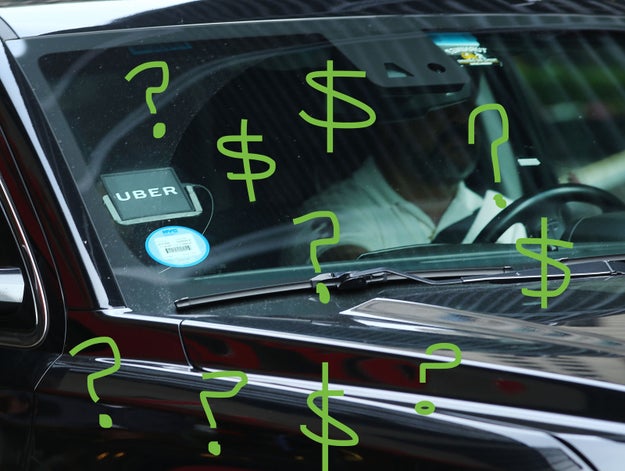A professor is revising his shockingly low estimates of how much Uber and Lyft drivers earn after Uber’s CEO sent a snarky tweet.

Spencer Platt / Getty Images
It’s hard to figure out how much money drivers for Lyft and Uber — and gig workers in general — are actually making. The drivers are independent contractors, not employees, so they don’t earn a regular wage, and ride hail companies have so far been unwilling to share driver earnings data with the public.
Last week, an MIT working paper by Stanford professor Stephen Zoepf made the shocking claim that ride hail drivers are earning on average less than $4 an hour after expenses. His research garnered a lot of attention — but it also isn’t accurate, and after Uber pushed back against the findings and offered new analysis, Zoepf revised his numbers.
First, MIT published a working paper that includes Zoepf’s eye-popping initial findings: drivers are earning just $3.37 an hour on average, and a third of them are actually losing money because of the cost of gas, repairs, depreciation, and insurance.

Zoepf got the data on which he based this report by collaborating with Harry “The Rideshare Guy” Campbell, who advocates for drivers via podcast, website, and newsletter, and surveying over 1,100 drivers from across the country.
These numbers, by far the lowest wage estimates of any study on ride hail drivers so far, caught the attention of the National Employment Law Project, which has been pushing for more protections for ride hail drivers for years. NELP shared the MIT paper with a bunch of reporters.

Zoepf’s shockingly low earnings estimates were covered by the Guardian, NPR, MIT Technology Review, and others.
Uber disagreed with the findings, too. In a blog post, the company argued that the survey the numbers were based on was misleading, and called the paper “deeply flawed.”

Uber economist Jonathan Hall basically argued that drivers who took the survey likely misinterpreted a question, causing their total reported income to be much lower than it would have been if the survey was written more clearly.
Uber’s CEO eventually weighed in, referring to MIT as “Mathematically Incompetent Theories” in a tweet.

After re-crunching his analysis based on Uber’s critiques, he came up with a much higher average hourly wage estimate — closer to between $8.55 or $10 an hour, depending on the methodology. According to the new figures, which are still rough estimates, 8% of drivers still lose money while driving, and more than half are still earning less than minimum wage after expenses. While the drivers’ independent contractor status makes this legal, in many of Uber’s most popular markets, these earnings alone would make it difficult to get by financially.
Zoepf’s research was only a working paper to begin with, meaning it wasn’t peer reviewed, and he intended to revise it based on conversations with Uber, Lyft, and others. Uber’s Khosrowshahi tweeted his thanks over the weekend for MIT’s willingness to re-run the numbers.
In a statement, a company spokesperson said Uber supports Zoepf’s “decision to conduct a thorough revision of the paper over the coming weeks."
Drivers work on multiple platforms, earning different rates per mile and per minute in different markets, different bonuses, and different tips. On top of that, economists have to estimate how much repairs, fuel, depreciation, and maintenance costs each driver, depending on things like what the weather is like where they live and what kind of car they drive.
While nobody but an individual driver has a perfect picture of earnings, Uber and Lyft have access to much of the relevant data that would make it fairly easy to figure out what drivers earn. While Uber says it has shared data with some researchers — most notably Alan Krueger, whose most recent work estimated drivers earn $18.75 an hour before expenses — Zoepf said the confusion is caused in part by Uber’s lack of transparency.
“What Hall and Khosrowshahi's assessment laid bare was an assumption about revenue that I made in the absence of public ride-hailing data and a paucity of independent studies outside Uber's own analyses,” he wrote. Zoepf went on to ask Uber to "help make open, honest, and public assessment of the range of ride-hailing drivers profit after the cost of acquiring, operating and maintaining a vehicle."
from BuzzFeed - Tech https://www.buzzfeed.com/carolineodonovan/uber-driver-earnings-research-mit-dara-khosrowshahi?utm_term=4ldqpia
No comments:
Post a Comment